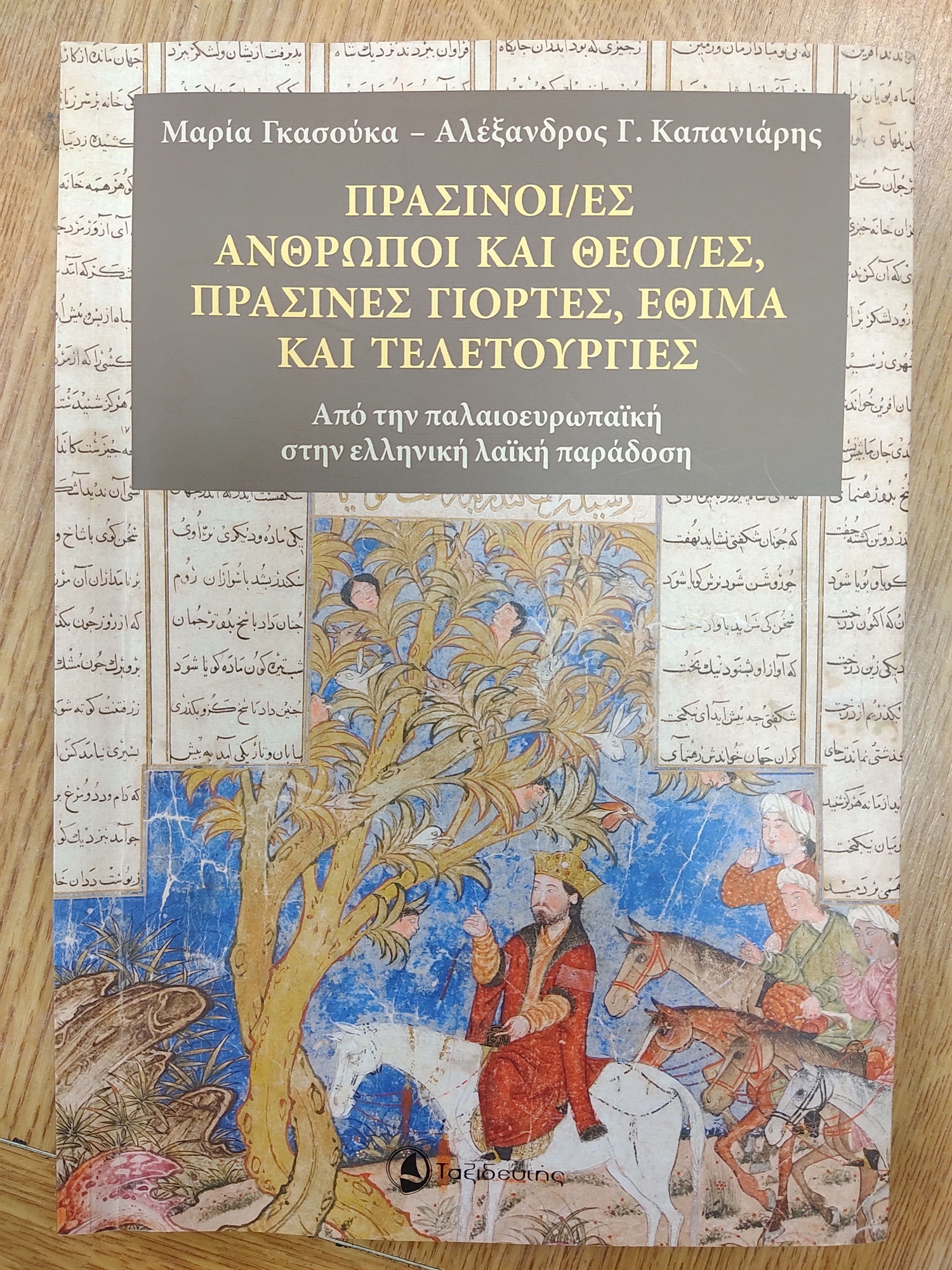
MARIA GASUKA – ALEXANDROS KAPANIARIS
Green people and gods, green holidays, customs
and rituals
ed.. Traveler, page 214
Green people is a recurring motif that seems to travel from culture to culture and from period to period.
Maria Gasuka often likes to call herself a traveler. But she is an emeritus professor at the University of the Aegean, the author of twenty books on gender, folklore and education, and in her latest book, Green Men and Gods, Green Holidays, Customs and Rituals, she signs a contract with Alexandros. Kapaniaris, PhD in Digital Folklore from Aegean University, magically manages to bring them all together. Take us to the ends of the earth, from the distant past to our days and talk to us about the symbols of female power. In addition, he manages to do something more important, to make an academic text, with a folklore-historical theme, flowing, as if through the pages of a book, with all the wisdom that we have forgotten and every day we pay for its loss. Ignoring the cycle of life, the magical power of nature.
The term “green people” may not be familiar to us, and let the authors note that one of the first images of it is “the statue of Dionysus, which is located today in Naples and dates from about 420 BC.” It is usually without a body, the head of a mature male or less commonly a female, surrounded by foliage, fruit, or flowers. Or, as more “live” dictionaries describe it, like a head suddenly emerging from a bush. The leaves come out of the nostrils and ears, the leaves represent his hair. Sometimes it is a vine, vine leaves and grapes, sometimes the foliage that adorns it is oak, nutmeg or acorn, this wild plant of Greek land, whose climbing leaves are depicted on Corinthian capitals. It is about the pagan spirit of nature with “this idea to enhance the green color of eternal life and eternal truth”, as they “demonstrate the relationship of man with nature in the most frank way, emphasizing the idea that they cannot survive people without her.”

These heads can be found in medieval churches such as Canterbury Cathedral, among the few that are owned by a woman. The authors record the campaigns of green people from East to West, their birth in ancient European societies, according to some researchers, or some more modern ones, in India or Borneo. They write the Green Man as “a motif that repeats itself, seems to travel from culture to culture and from one period to another”, as the authors find him in the Sufi tradition as Al-Kidra, the Green who achieves immortality as the only one who drinks the water of life. , in Domus Aurea, Nero’s palace, at Hadrian’s Gate in Ephesus, as Khedr in the Beit Jala region of Palestine, in the Green Knight from the Arthurian myths, later in the legend of Robin Hood. Because, as they write, “green people are part of our collective unconscious and represent, in one way or another, our archetypal relationship with nature.” “They are the bearers of death and resurrection in an endless cycle…they are the new god who is constantly being sacrificed, descending to the underworld, and also constantly being reborn.”
Special mention deserves the exclusive “Green Woman”, the Irish Sheela na Gig or Sheela na Gig, which some of us may know from the PJ Harvey song “Sheela-na-gig, Sheela-na-gig, You Exhibitionist”. Carved stone or wood statues of old women, naked or leafy, displaying their genitals. They first appear in Spain and France, with the largest number of such statues (101) in Ireland. Placed in medieval churches and castles of the 11th century, over doors and openings to ward off evil, their meaning and origin have been interpreted by scholars in different ways. Some believe they are “representations of pagan, usually Celtic beliefs that survived and were incorporated into the ‘new’ Christian church”, others “that they represented female lust as a terrifying and sinful corruption”, or as forest spirits with faerie or elf characteristics. he who replies with kindness is gold. Whatever their meaning, these overtly sexualized sculptures are once again gaining interest with new promotions such as Project Sheela’s, which the artists behind it are placing on Dublin’s women’s wrestling monuments, New Sila and intending to expand to all European cities.
Source: Kathimerini
James Springer is a renowned author and opinion writer, known for his bold and thought-provoking articles on a wide range of topics. He currently works as a writer at 247 news reel, where he uses his unique voice and sharp wit to offer fresh perspectives on current events. His articles are widely read and shared and has earned him a reputation as a talented and insightful writer.